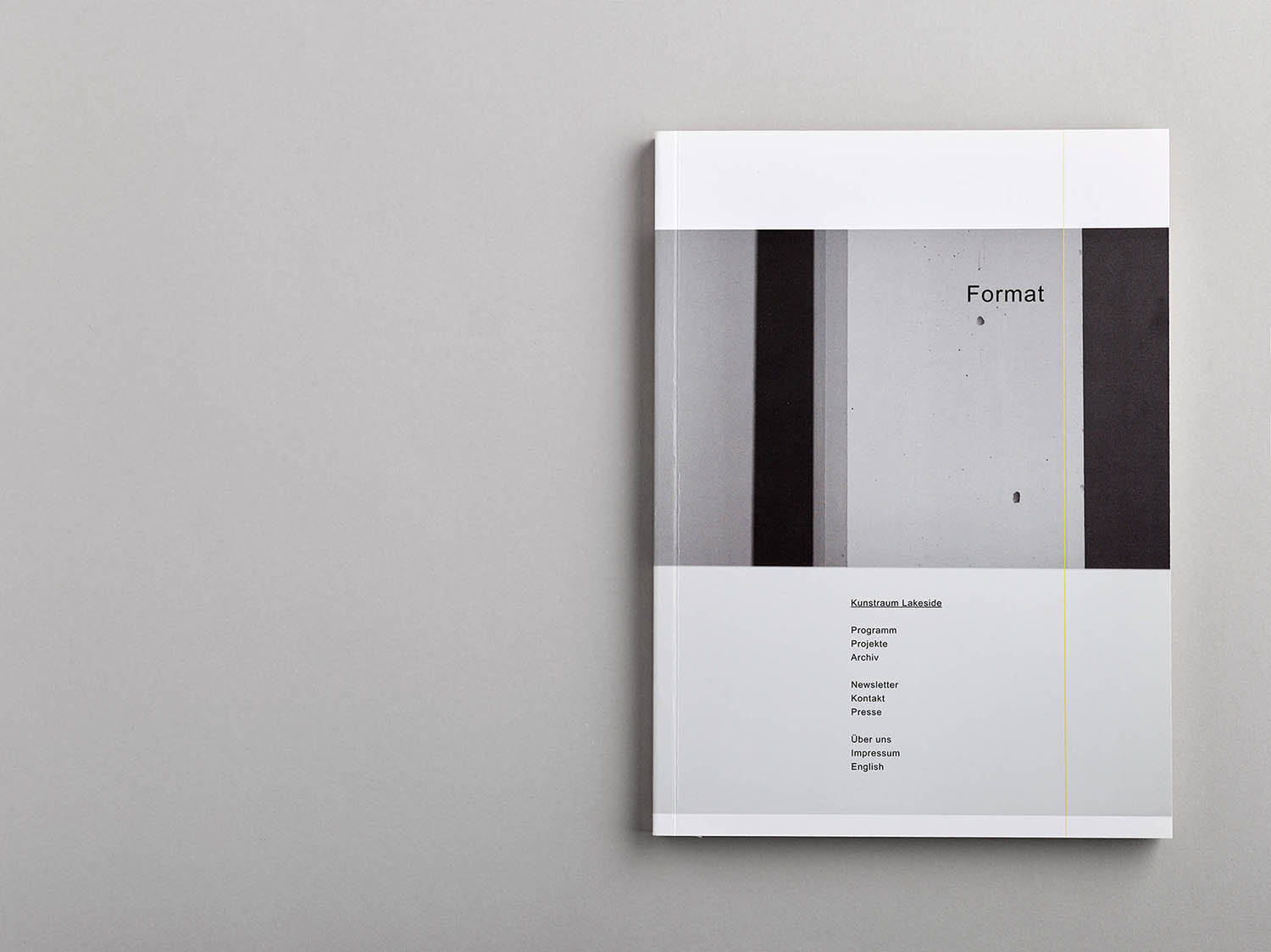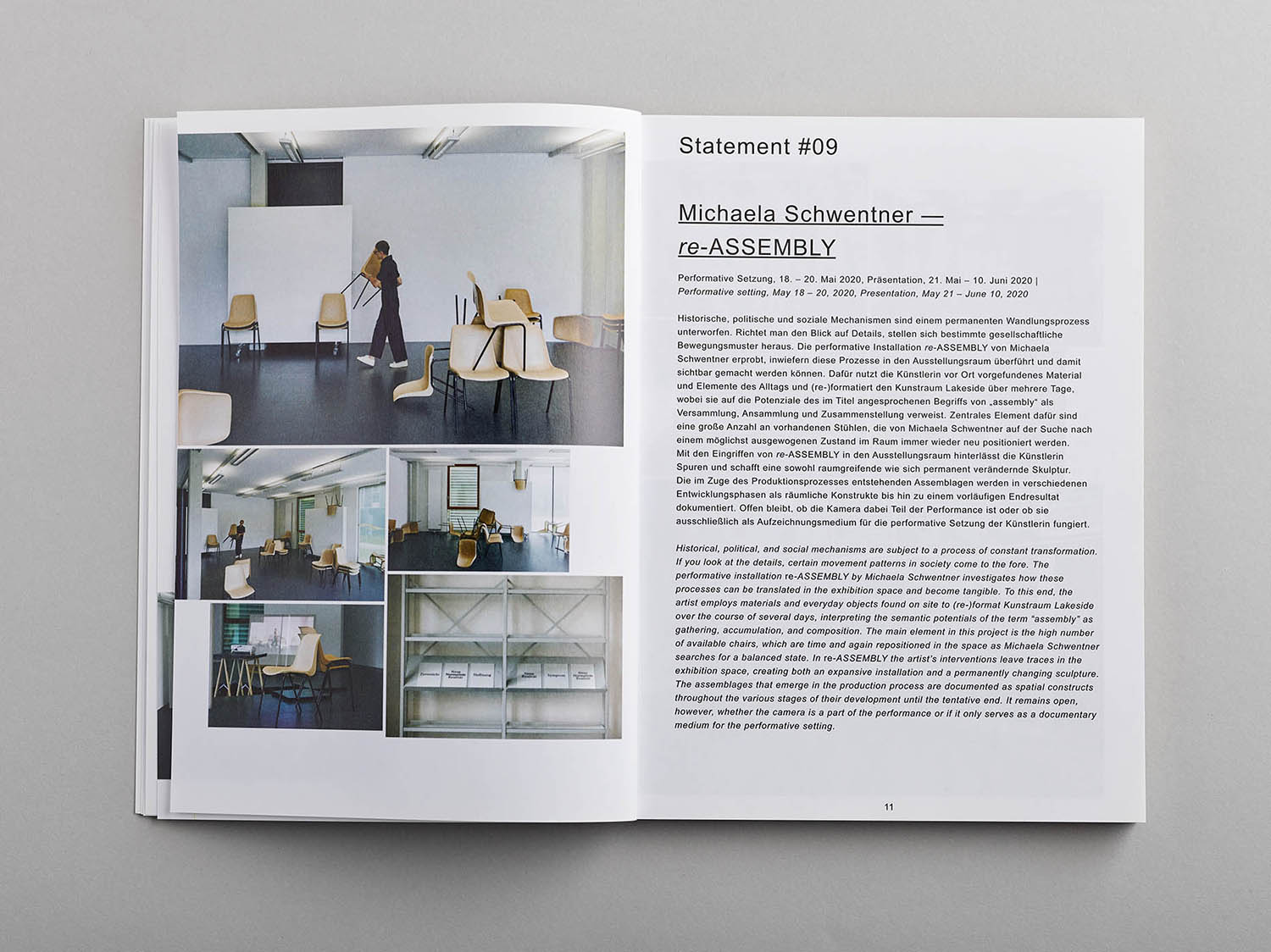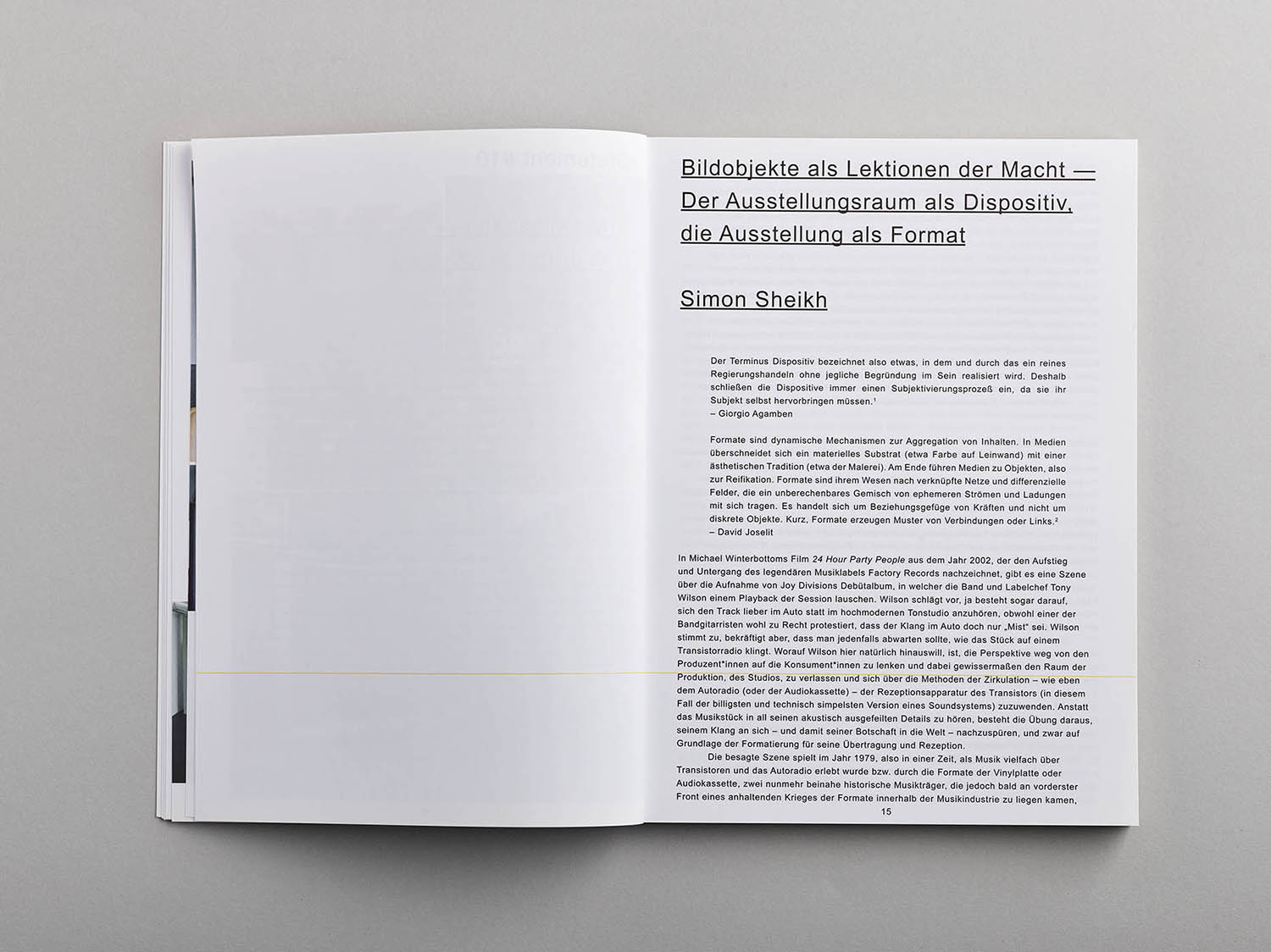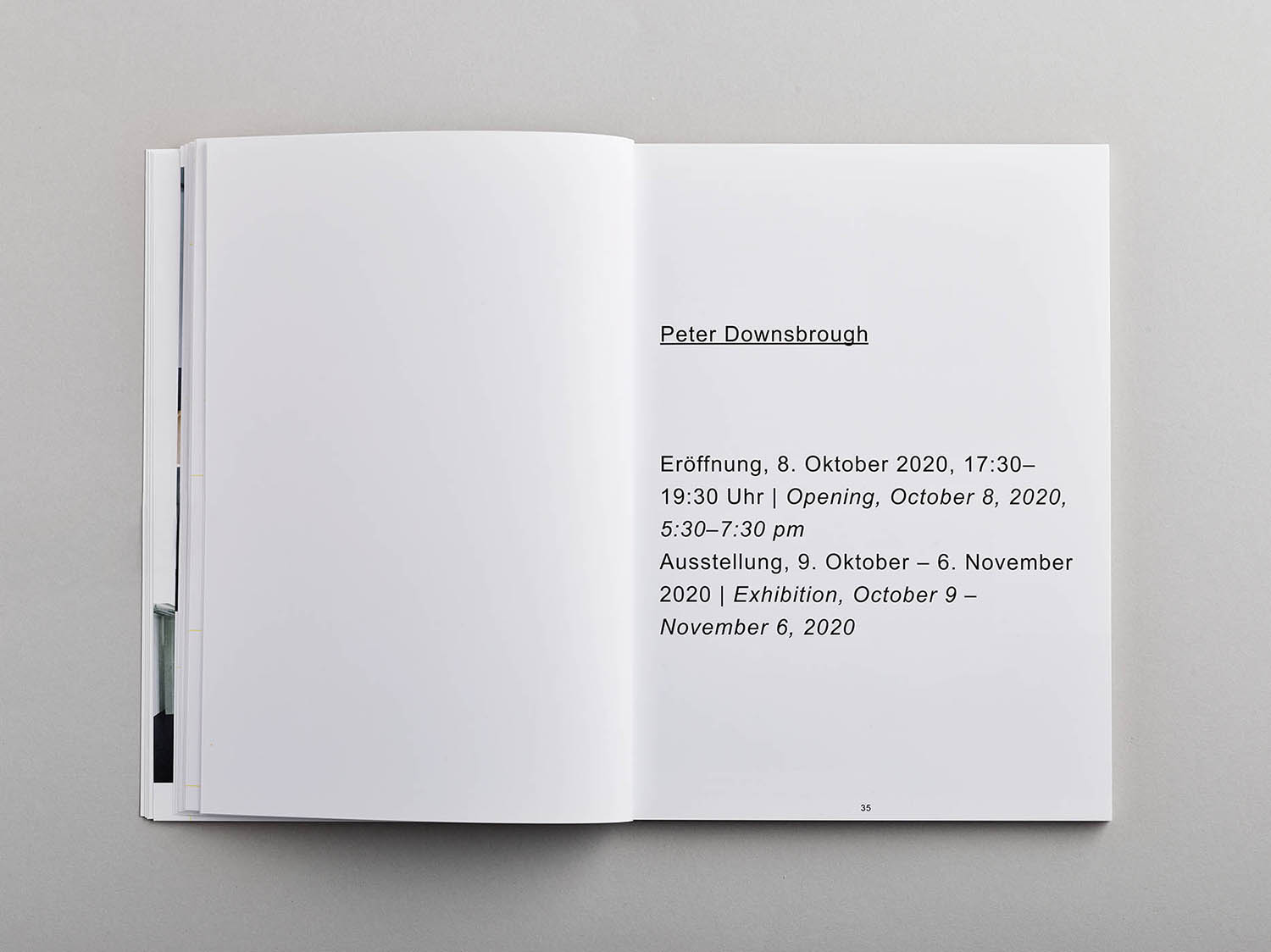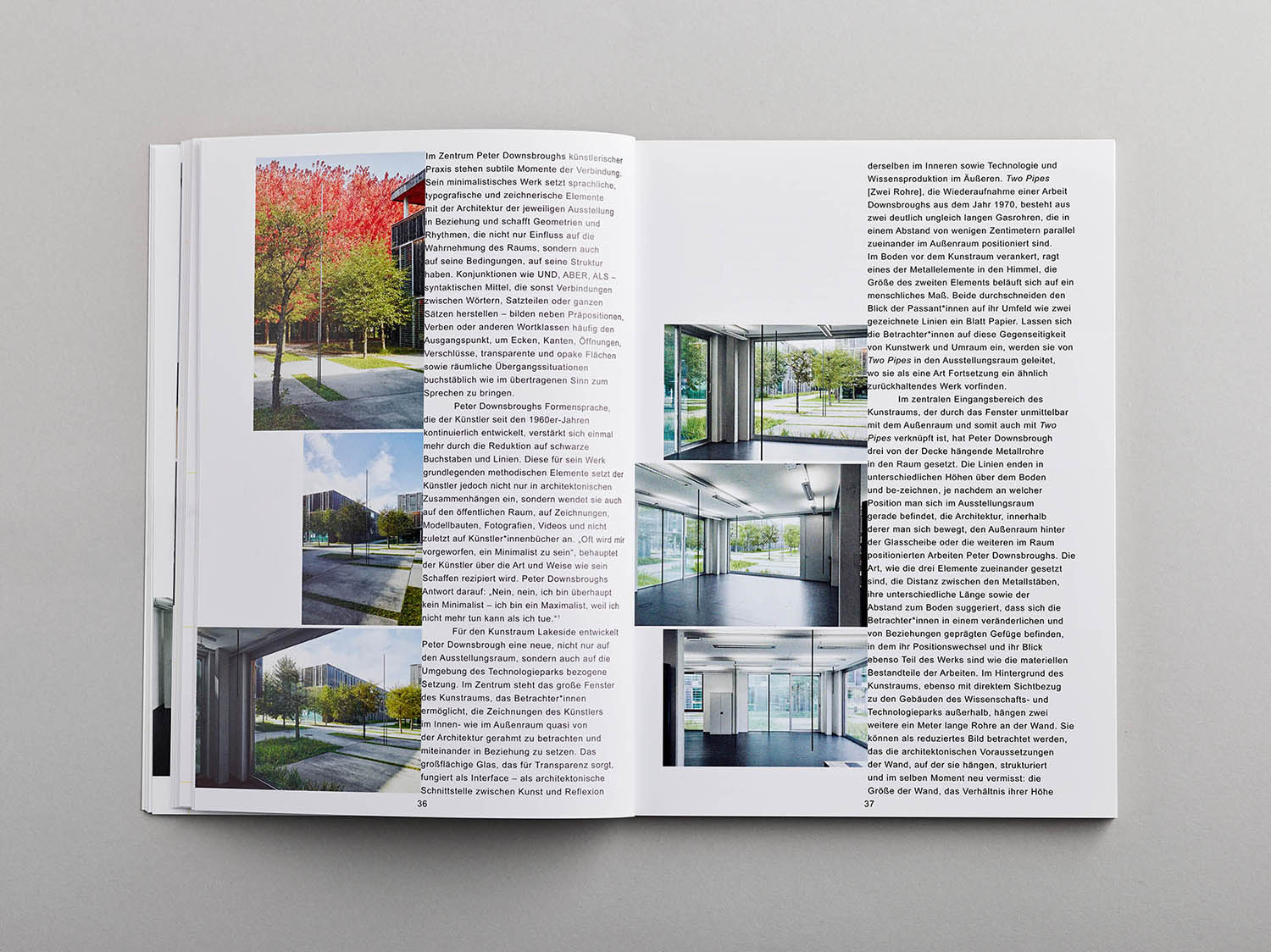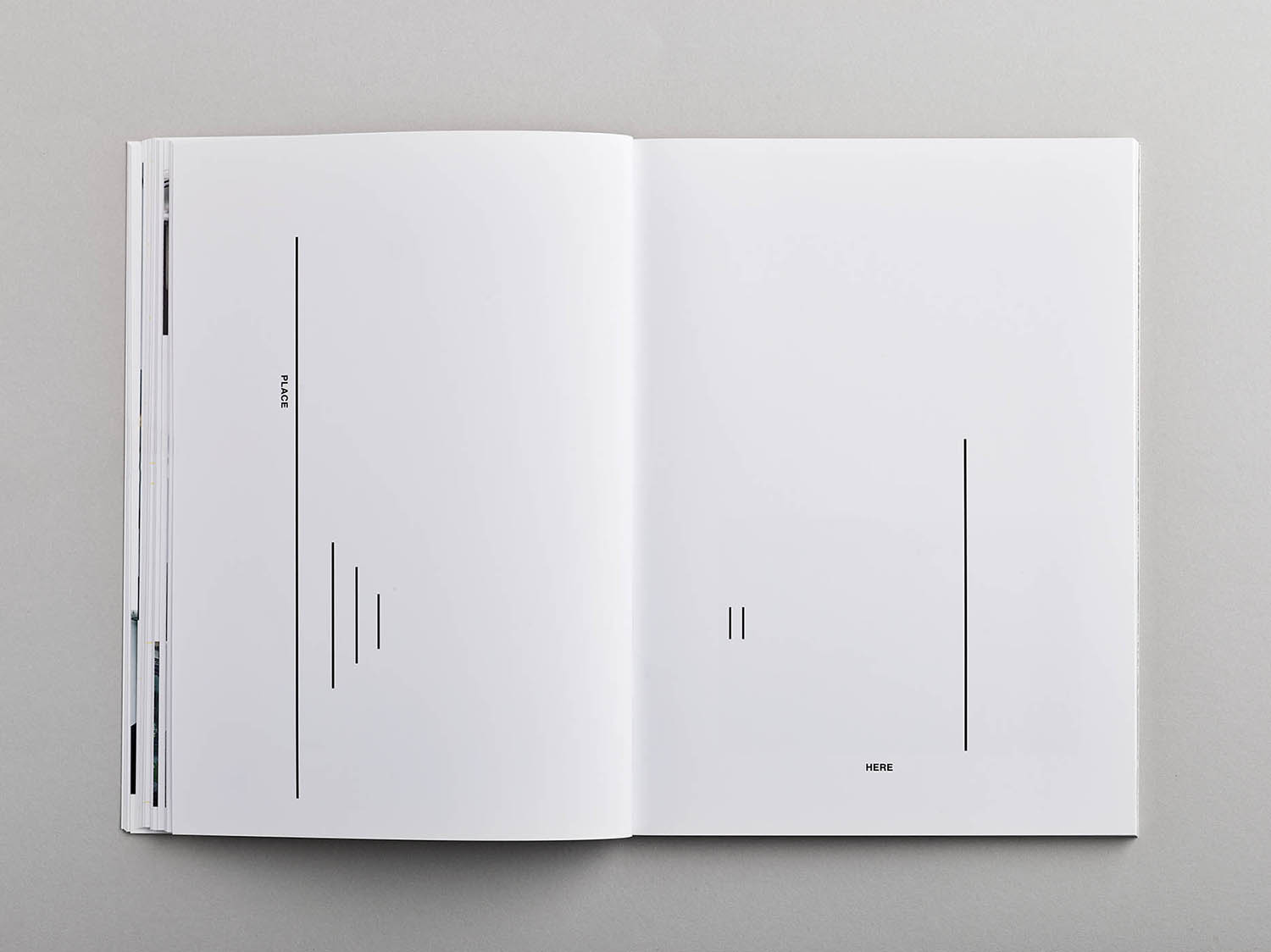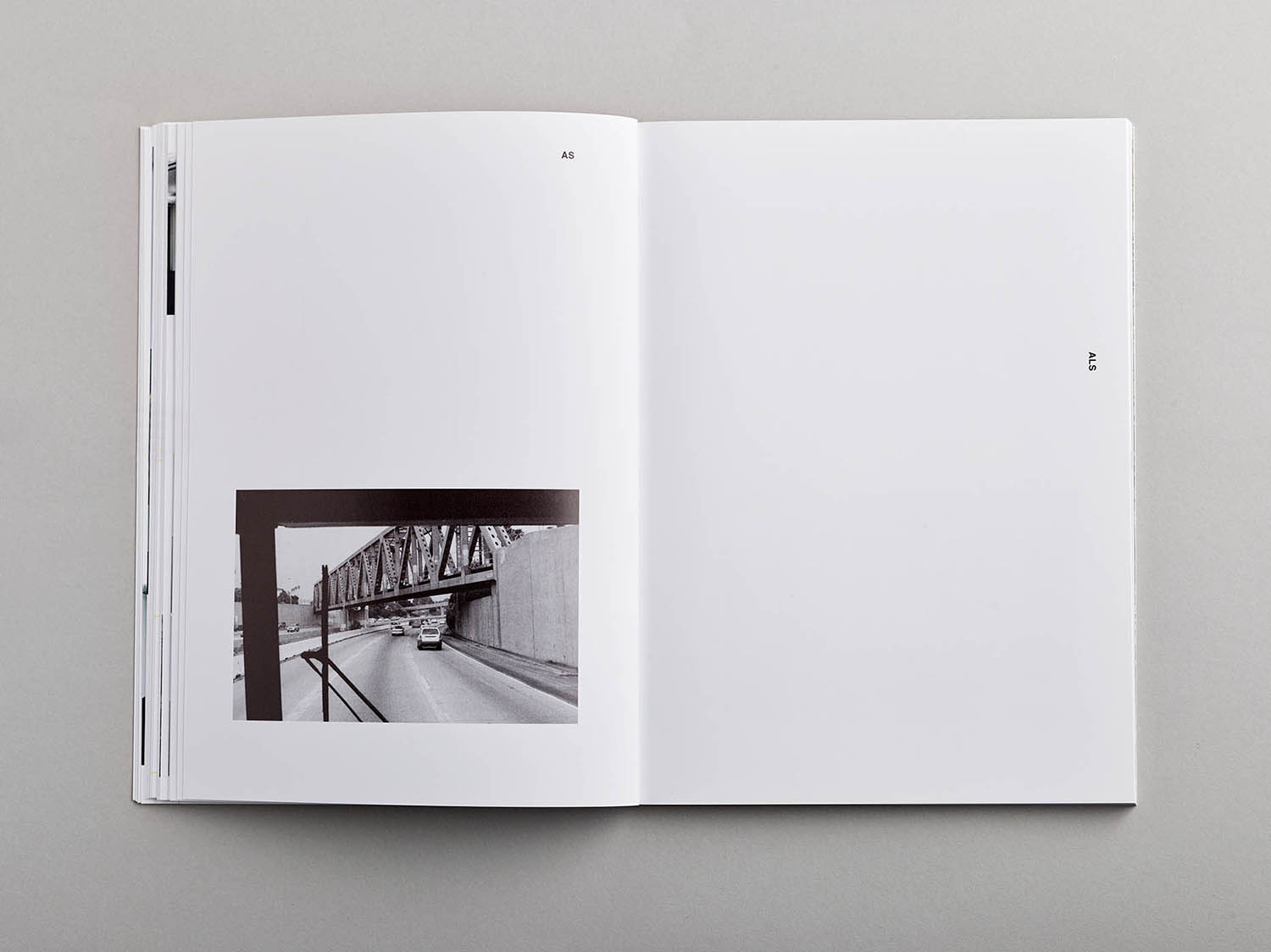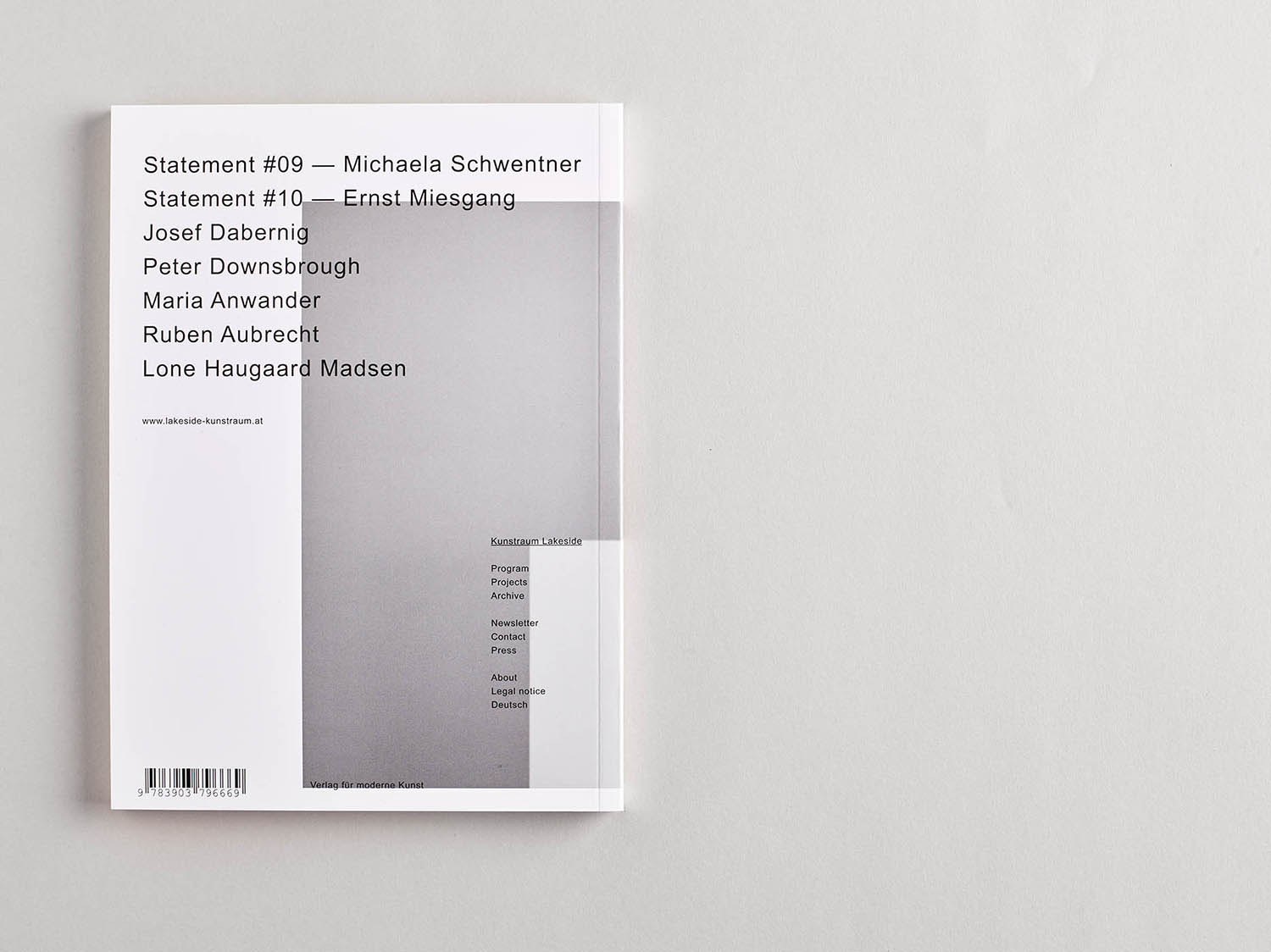Simon Sheikh
The term “apparatus” designates that in which, and through which, one realizes a pure activity of governance devoid of any foundation in being. This is the reason why apparatuses must always imply a process of subjectification, that is to say, they must produce their subject.1
– Giorgio Agamben
Formats are dynamic mechanisms for aggregating content. In mediums a material substrate (such as paint on canvas) converges with an aesthetic tradition (such as painting). Ultimately, mediums lead to objects, and thus reification, but formats are nodal connections and differential fields; they channel an unpredictable array of ephemeral currents and charges. They are configurations of force rather than discrete objects. In short, formats establish a pattern of links or connections.2
– David Joselit
In Michael Winterbottom’s 2002 film 24 Hour Party People, a portrait of the rise and fall of Manchester’s legendary Factory Records, there is a scene depicting the recording of Joy Division’s debut album, where the band and the label’s founder Tony Wilson listen to a playback of the session. Wilson suggests, even insists, that they listen to the track in the car rather than with the studio’s state-of-the-art equipment, even though one of the band’s guitar players quite rightly protests that “it’ll sound rubbish in the car”. Wilson agrees, but argues that they have to hear what it sounds like on a transistor radio. What Wilson is attempting here is, of course, to shift perspective from that of the producer to that of the consumer, passing through the space of production, the studio, through the modes of circulation, the car radio (or cassette), to the device of reception, the transistor (the transistor being the cheapest and most lo-fi version of a sound system). Rather than listening to the track in all its perfect audio detail, the exercise is to investigate its sound, and thus its message to the world, through its formatting for transmission and reception.
The scene is set in 1979, when listening to music often took place through the transistor and the car radio, and otherwise through the formats of the vinyl LP and the cassette, two now almost historical formats, which were then at the forefront of a continuous format war in the music industry. Soon, as the 1980s progressed, it was followed by the compact disc versus the Musicassette or the LP, and later the CD against the onslaught of MP3, Spotify versus radio, and so on. In essence, these format wars were waged on three fronts: revenue, repetition, and reverence. Revenue has to do with increasing revenue, for example through lowering the production costs of a unit, such as a CD versus an LP, while simultaneously raising the retail price of each unit. But this also has to with repetition: making the consumer buy the same piece of music many times as formats change, but also as back catalog editions, repackaged into various box sets, and so on. Which leads us to the third front, reverence. Making consumers buy the same music time and again is not just about convenience, such as downloading your favorite music onto your smartphone and the like, but also the ultimate commodity fetishism, both in terms of the box set of your favorite artists as well as aesthetic pleasure and status, for example the collectibility of vintage and first pressings or new vinyl LPs. In each of these cases, however, the medium arguably remains the same (pop) music, and its forms also remain largely unchanged, in the form of the single and the album as artefacts and statements. But it is the format itself that changes how music is received and perceived, how and where it is encountered and experienced, not only quantitatively but also qualitatively.
Formats and (post)mediums
The format wars of the music industry (which was actually a type of civil war that all but destroyed the industry itself) can perhaps be instructive for thinking about format within the parameters of contemporary art, with its modes of production, presentation, and dissemination, and for (re)considering its established forms and mediums in the terms of the input and output that the notion of format implies. Moreover, revenue, repetition, and reverence are also crucial in understanding how contemporary art communicates, circulates, and is indeed even consumed (by both gallery visitors and actual collectors of art). However, if formats have a very tangible form and fairly fixed meaning with regard to the dissemination of music as a product, introducing format into art theory and history immediately brings us into the vicinity of the modernist discussion of form, and form versus content, and the contested notion of formalism—all which the format can be seen as both an expansion and a deconstruction of, without any foreseeable conclusion!
The introduction of the term format into contemporary art theory is owed to the efforts of art historian David Joselit and his 2013 book tellingly entitled After Art, indicating that something has passed, been transformed, namely the category of art itself. In this sense, the book follows a tradition of thinking about the end(s) of certain modernist ideas of art, most famously Arthur C. Danto’s After the End of Art, published in 1997, whose title Joselit mirrors, but also contemporaneous books like Pamela M. Lee’s Forgetting the Art World and Joshua Decter’s Art Is a Problem, published in 2012 and 2013 respectively.3 For Danto, it is the double onslaught of the ready-made and the dematerialization of the art object through conceptualism in the 1960s and 1970s that brings about the end of art in a historical, linear sense; whereas Joselit’s After Art is less of a postmodern story proper, as he departs from the end of postmodernism and the fundamental shift in the production and, above all, circulation of art brought about by the digital revolution:
The after of my title, unlike Danto’s use of the prefix post in his preferred term, posthistorical, is meant to indicate both the reverberations of images as they spread (as in the term afterimage) as well as the patterns of circulation that emerge after images enter networks.4
We are thus dealing with two very different, if related (also historically), notions of an after: the first an end to, if not history, then art history; whereas the latter after-the-event involves transformation rather than termination, what happens to (art) images when they become digitally transferrable, a focus on the after-effects of this change, so what comes after the end. It is, in other words, not about a post-medium condition, but rather a post-internet condition, and thus a matter of differentiating through formatting and networking, which entails a shift in focus from production toward circulation and reception in the art-historical analysis of images—a consideration of what Joselit circumscribes as their “effects”, and as he adds, their power, their relations to and of power. These shifts are not only diverging temporally, but also on a material level: While the end of art had to do with the dissolution of form, the notion of an after art pertains to the dematerialization of the art object along with the recomposition of the art image after the digital, and thus with the introduction of format as the successor to form.
Transformations of discourse after the internet
These shifts transform not only the system but certainly also the discourse that we call contemporary art at different times and with different effects, but also from very different positions of entry (or nodal connections to use Joselit’s preferred term). At this point, it is worth recalling how Michel Foucault in “The Will to Knowledge” described how radical transformations of discursive practices tend to occur in one of three specific ways:
The transformation of a discursive practice is tied to a whole, often quite complex set of modifications which may occur either outside of it (in the forms of production, in the social relations, in the political institutions), or within it (in the techniques for determining objects, in the refinement and adjustment of concepts, in the accumulation of data), or alongside it (in other discursive practices).5
Now, Foucault may have primarily had the sciences in mind, including the human sciences, and not the making and mediation of art and cultural production as a discursive formation. However, if applied to contemporary art on a systemic level, we can better understand the difference between the changes identified by Danto and Joselit respectively, and thus the difference between medium and format. What disturbed Danto about the dematerialization of the art object, and thus brought about a certain end to the history of art, is that it clearly manifests as an artistic practice that alters the discourse of art from within the discipline itself. Conversely, what Joselit distinguishes as the after-image and the primacy of circulation in current art practice originates from the technological advances within the production of images with the advent of digital technology—in other words, within a discursive formation where new technologies run parallel to contemporary art but are certainly not alien to it. Moreover, we can also identify a shift in focus from art object to image circulation—while mediums inevitably lead to objects or even commodities, formats are rather “configurations of force”, which “establish a pattern of links or connections” and ultimately circulate as a currency as much as a commodity, and are, in this sense, part of a global economy of attention.6
Joselit’s focus on how the appropriated, circulated, and reproduced image establishes connectivity, both on a small and large, planetary scale, is a concept of an image that has both expanded into the social (and political) and been reorganized materially through pixelation, enabling it to travel and connect. Although it is never mentioned in the book, this notion of the image, and its impact on the phases of production, circulation, and reception of art, corresponds to what has also been termed the post-internet condition. First coined by artist Marisa Olson, “post-internet” art was conceived as art made after the advent of the internet and computer-generated and altered image production as opposed to art made for and posted on the internet. The notion of a post-internet condition that influences all types and forms of art production was promoted and gained influence and infamy by artist Artie Vierkant through the publication and widespread circulation (as a PDF, naturally…) of his essay The Image Object Post-Internet (2010). Like Joselit, Vierkant is also engaged in the power of circulation. While privileging the image over the object to some extent, he investigates how (e.g. through computer generated image objects and 3D printing) artworks can move from online spaces to the white cube of the gallery, and back again—in other words, how the same work exists across formats, hence the use of image object in the title. However, Vierkant does not employ post-internet as a critical tool but as a promotional one, neatly sidestepping issues of currency and economy in the transfers between the online space of viewing and production and the same work’s presentation in commercial galleries and the type of formatting the gallery enables. The essay is consciously written in the programmatic style of a well-known artist statement from historical conceptualism, a canon that Vierkant places post-internet art in, along with the practitioners he lists under this rubric, such as Seth Price and Jon Rafman, as heirs to a legacy of what we can call dematerializing art practices. Post-internet art is thus connected, ultimately, to the circuits of power that Joselit sees as the destination of images and imaging after art (and with Vierkant, after art after the internet…).7 Nevertheless, this connectivity allows us to think of the image and object as not being separate, rather as shape shifting and overlapping, neither a primary nor subordinate form—simply as ways of formatting content and thus procuring currency. As opposed to medium, the format implies an input and an output—not just a transformation in terms of currency, but as in financial speculation, a transformation that generates surplus value.
The image object in circulation
Changes brought to the discursive formation of contemporary art—both post-medium and in terms of formats—are thus related to notions of power, and as in Michel Foucault’s description above, to the relationship between power and knowledge, both in dealing with objects (and their demise) as well as the production of subjects (and, indeed, their demise). In Foucault’s work discourse is naturally not purely abstract, and not just in terms of systems of knowledge (such as academic disciplines) but also institutional spaces and practices, and it is inscribed onto and into actual bodies: medicine practiced in the hospital, punishment in the prison, psychiatry in the asylum, and so on. Building upon Foucault’s discourse analysis on the birth of the museum, Tony Bennett coined the term exhibitionary complex, which encompasses the institution itself as well as its activities of display and collection, and described this as object lessons in power—power being “the power to command and arrange things and bodies for public display.”8 These lessons in power are public for a specific reason: on one hand, to demonstrate to the population how powerful the sovereign or the state is; on the other, to empower the population to participate in the narrative of display and collection. It thus becomes, in effect, both a subject as well as an object of knowledge (and thus power). Historically, at the birth of the modern museum in the nineteenth century, the display consisted of objects and artefacts as well as images in the form of paintings. But in the contemporary condition—the post-internet condition—we should perhaps speak rather of image objects, circulating within and beyond the gallery space, with every contemporary museum worth its name also producing image object lessons in power through their virtual platforms and social media networks.
Now, the fact that museums and galleries employ different formats, from various types of exhibitions to a range of other activities, and oscillate between the public and non-public, the high and the low, is perhaps hardly an original insight, nor is it in any way new that they partake in a complex set of relations, which can be understood as being part of larger networks of power and knowledge and part of a network culture. However, the post-internet condition and its privileging of circulation over production reminds us and reinforces that our institutions, museums, galleries, and independent spaces are all networked and trading in currencies. Digital platforms and their growing importance do not reveal a particular museum’s actual networks, but they do show that they are networked as opposed to being self-contained and serve as transformers or nodal connections with a variety of inputs and outputs. In between these inputs and outputs stands a machine, or what Foucault termed the “dispositif”: the apparatus.
The Apparatus
As with the central categories of knowledge and power, the notion of the apparatus was never, in true fashion, fully defined in Foucault’s work, rather persistently bracketed and relativized. Although, as Giorgio Agamben remarks in his essay expanding on Foucault’s term, a working definition was provided, sort of, in a 1977 interview that is indeed useful for our purposes. Here, it is described as a set of conjoined institutions and discourses, regulations and customs, principles and practices, including both that which is clearly stated and that which is simply implied. “The apparatus itself is the network that can be established between these elements” [emphasis added], and its function is, interestingly, to manipulate and intervene in “the relations of forces, either as to develop them in a particular direction, or to block them, to stabilize them, and to utilize them.”9 This is precisely what museums and galleries perform through their formatting: sometimes representing specific stories and histories; at other times depresenting them, perhaps in aid of certain ideas and identities; and at other times, and in other places, attempting to prevent the very same ideas and identities from advancing. Furthermore, the art institution is embedded in both visible and invisible networks, in governments and governmentality, in publics and counter-publics, in communities and constituencies, in patrons and backers, in the past and presents, and in some cases even oriented toward the future. As apparatuses supporting and, in turn, supported by select sets of knowledges and immersed in specific relations of power, there is, then, no structural difference between the national or corporate museum, on the one hand, and the independent space or artists-run gallery, on the other. The difference resides, rather, in their respective networking efforts and in their access to certain networks, and not to others, and in terms of their scalability, as Joselit would phrase in his usage of format—not just up and down, but also left and right, forwards and backwards. With reference to Benjamin Bratton’s slightly more recent and infinitely more thorough analysis of the governance of architectural and computational apparatuses, we could even speak of institutional forms being stacked, that is, an order that is not only modular in how it is networked, but also layered and vertical.10
As might be gauged from this outline, the apparatus is both a concrete and abstract type of machinery, which can be applied to the historical case studies Foucault examined throughout the 1970s and to the exhibitionary complex and cultural institutions, but also expanded further in terms of contemporary societies, especially post-internet, and now be analyzed and employed almost as a guiding principle of governance. To be sure, Agamben’s revisitation of the notion is such an expansion and also a radicalization of Foucault’s original concept. First, Agamben claims that apparatuses are “…literally anything that has in some way the capacity to capture, orient, determine, intercept, model, control, or secure the gestures, behaviors, opinions, or discourses of living beings:”11 Apparatuses, in this expanded sense, consist of concrete architectures of power, buildings, borders, and so on, but also of uses of language from the juridical to the poetic, and finally of machines that we otherwise consider enabling tools, such as computers and cell phones. It is quite remarkable, considering how Agamben favors classical philosophical and theological texts, how his language of capture, interception, and modelling mirrors that of the computational and digital, and the infrastructural thinking of authors like Bratton, and even Joselit. But Agamben not only actualizes and modernizes the apparatus as an analytical tool, he drastically radicalizes it by dividing our reality—the contemporary, post-internet condition—into two almost diametrically opposed substances: living beings, on the one side, entangled, as it were, in a deadly fight with the other side, the apparatuses of governmentality! In between these forces, and resulting from their struggle, emerges the subject, not emancipated and enlightened, rather battered and bruised. This is what it means, then, to have never been modern, but truly postmodern. This conclusion would certainly cast the institutions of art in a somewhat sinister light—after art, as it were—and argue not just for political resistance, but also an ethical turn in how we institute and (re)purpose apparatuses and formats alike.
Formatting Kunstraum Lakeside and after
Hence, it is opportune that Kunstraum Lakeside’s 2020 exhibition program was dedicated to the notion of formats, and in doing so it also allows us to consider it as an apparatus and discursive formation—a part of the programming is even named “statements”, a key term in Foucault’s understanding of discursive formations. The diverse artistic projects were united thematically, but also methodologically, literally employing formats, the shift between formats, and the transformation of currency. All of the projects related to the space itself, its architecture and its 15-year history, engaging both the exhibition and gallery itself as a format as well as a nodal connection in a network that is both internal and external. This was clear to see in Josef Dabernig’s revisitation of his own design of the gallery of 15 years prior, but also in Ernst Miesgang’s formatting of the gallery’s objects and structures and its immediate context of the Lakeside Science & Technology Park, which were scanned and sound recorded using modified devices—a technique that also shifted the use value of specific formatting tools (a document scanner and stethoscope both cast against type, so to say). The changing status of the image object through formatting was also at play in Michaela Schwentner and Lone Haugaard Madsen’s projects, which re-recorded and re-assembled the objects on display: in Schwentner’s work through re-arrangement of existing elements, choreography, and film; and in Madsen’s work through the photography, by another artist, of her paintings and sculptures, shifting the format of the work and the grounds from which we view it, and with them our notion of authorship—in effect, unsettling both viewership and authorship in the exhibition. This question of the boundaries between one person’s work and the other’s was also the focus of Maria Anwander and Ruben Aubrecht’s interventions, where each of the artists created a work based on a previous work of their partner (the two artists also share a studio, further blurring the lines between their practices). This interweaving can be seen, in terms of (re)formatting, as both a dissolution and an expansion of the respective individual artistic practice and identity: artworks literally produced after art. What these projects all shared, then, was the working thesis of the exhibition as a format as opposed to the well-trodden curatorial path of the exhibition as medium, and it is the circulation of meaning and value that was primary rather than the status of the image object itself—a focus on destination as opposed to origin. The image object is not rejected or deconstructed but formatted, which, in turn, raises questions about its provenance and authenticity and leads us toward participation, voluntary and involuntary, in networks and currencies—in other words, a play with the production of truth.
Maria Anwander’s aptly named pseudo solo show & Ruben Aubrecht and Ruben Aubrecht’s ditto & Maria Anwander could not take place as originally planned. The two exhibitions, or double feature, were scheduled to open on November 10, 2020, but cancelled due the global COVID-19 pandemic. Later on, however, there was a brief opportunity to view them. Yet, the work still circulates within the discourse of contemporary art, partly through this publication, and this very essay, of course. So it is once again a matter of formatting as another form of the transmission and circulation of the ideas. This is noteworthy now that the pandemic has swept our planet for more than a year, with the great consequences social distancing measures have had on art institutions, and thus how we view artworks, and for institutions’ remit to expose the public to art and offer public places to simply assemble. As it stands, we can no longer gather, view, evaluate, and argue like we used to, and therefore we will have to change the format, if not the currency of art and culture. With exhibitions and most discursive public events going online, artworks and talking heads are reduced to mere pixels, ironically by those most invested in their objecthood, namely commercial galleries and corporate museums, but also, if to a lesser extent, independent spaces like Kunstraum Lakeside. How can we reformat closed spaces? How can we interrogate institutions we cannot visit? And, perhaps most importantly: How and where can we actually congregate? Here, thinking about formats and networks, modes of connectivity and dominance, may actually be quite helpful. A change in format can, as with the format wars of the music industry, alter the listening experience, socially and aesthetically, but it does not undo the apparatus as a network, for the better or for the worse. It should rather remind us how formats could and should be used to change the currency—which was also Foucault’s idea of critique in his discussion of the ancient Greek cynics and their use of parrhésia, in effect, speaking truth to power.12 According to Foucault, the cynics did not see the oft romanticized strategy of parrhésia mainly as political in the pragmatic or technical sense of the term, but rather as an ethical turn: a way of entering a discussion not by responding to a given problem, but by turning it around, by altering the parameters of the discussion itself, and thus changing the currency. Hence, the transmission and transformation should be our arena of contestation and affirmation, how the image object of art, of capital, if you will, is attended to, rather than the historical shifts from medium to post-medium, and from form to format. Art already has—to return to the introductory invocation of music culture—if not left the building, then surely the medium.
Published in
Franz Thalmair (Ed.): Kunstraum Lakeside — Format,
Verlag für moderne Kunst: Vienna, 2021.
Download
1 Giorgio Agamben, What Is an Apparatus?, trans. David Kishik and Stefan Pedatella (Stanford, CA: Stanford University Press, 2009), 11.
2 David Joselit, After Art (Princeton and Oxford: Princeton University Press, 2013), 55.
3 See Arthur C. Danto, After the End of Art (Princeton: Princeton University Press, 1997); Pamela M. Lee, Forgetting the Art World (Cambridge, MA: MIT Press, 2012); Joshua Decter, Art Is a Problem: Selected Criticism, Essays, Interviews and Curatorial Projects (1986–2012) (Zurich: JRP|Ringier, 2013).
4 Joselit, 112, fn 83.
5 Michel Foucault, “The Will to Knowledge,” in Ethics – Subjectivity and Truth, ed. Paul Rabinow, trans. Robert Hurley et al. (New York: The New Press, 1997), 12.
6 Joselit, 55.
7 As a format for the presentation and circulation of value, it is interesting to consider the double meaning of the term portfolio, as invoked by Joselit, both in terms of an index of an artist’s works for curators, gallerists, collectors, and other agents to look at, and in terms of designating a list of investments (such as stocks, shares, and real estate).
8 Tony Bennett, “The Exhibitionary Complex,” in Thinking About Exhibitions, eds. R. Greenberg, B. Ferguson, and S. Nairne (London: Routledge, 1996), 84.
9 Quoted by Agamben, 2.
10 Benjamin H. Bratton, The Stack – On Software and Sovereignty (Cambridge, MA: The MIT Press, 2016).
11 Agamben, 14.
12 Michel Foucault, The Courage of Truth: Lectures at the Collège de France 1983–1984 (New York: Palgrave MacMillan, 2011).
